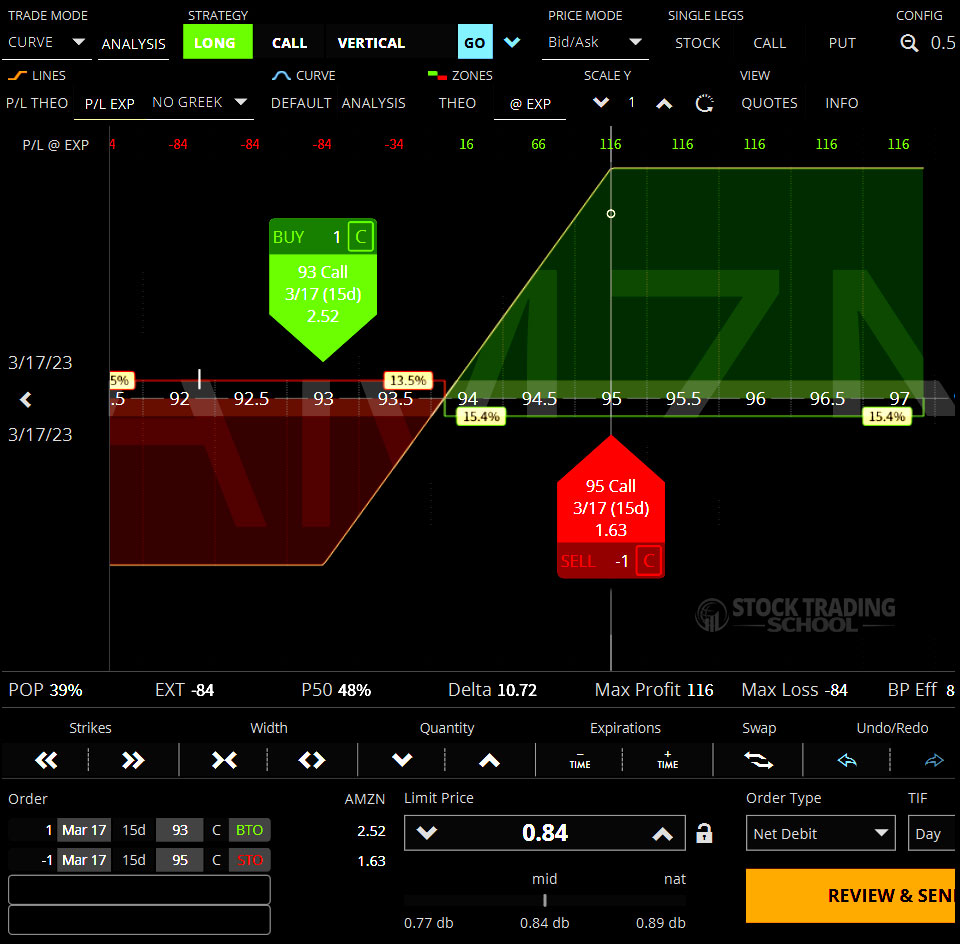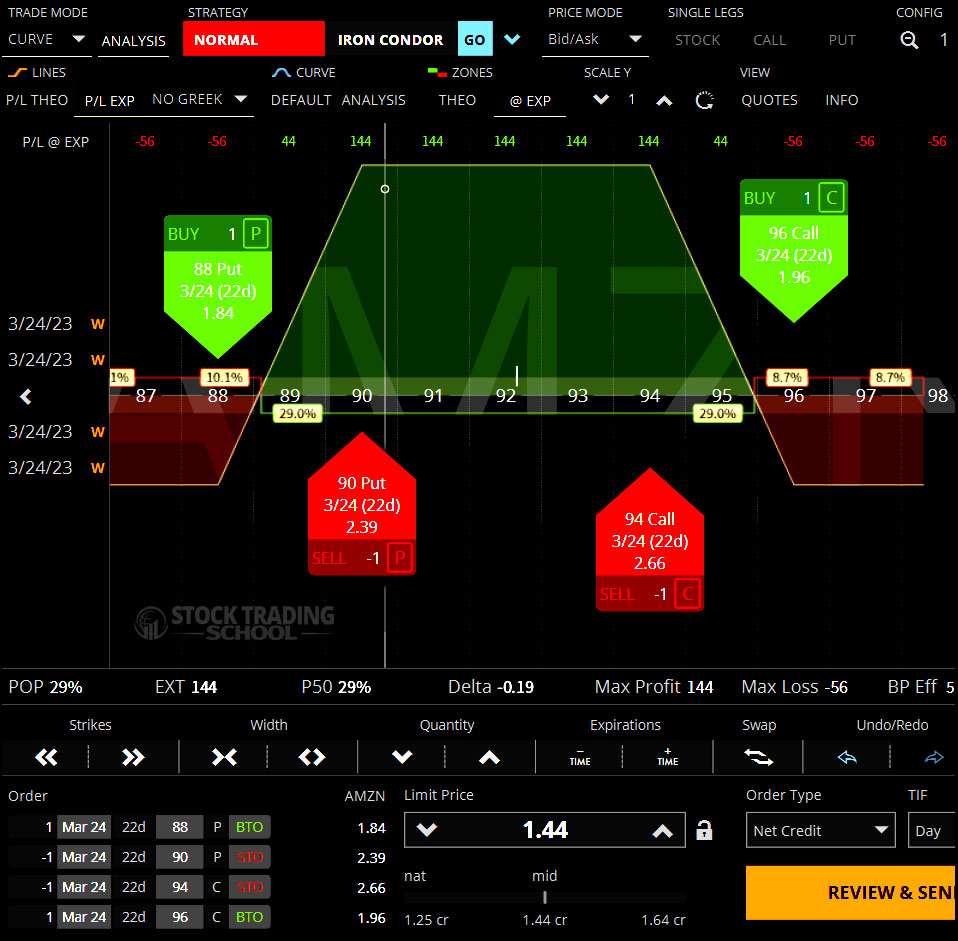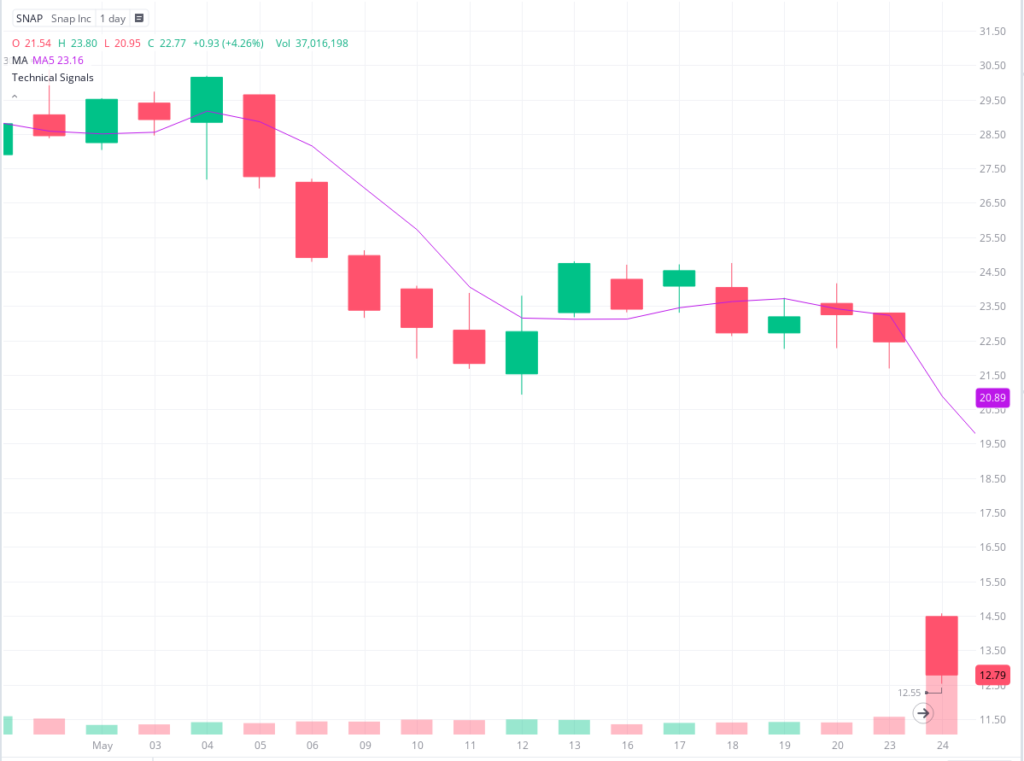Free Options Trading Course
Lesson Nine
Market Analysis Options Trading Strategies
Lesson nine in our free options trading course covers market analysis options trading strategies which includes sector rotation for options trading, trading options on earnings announcements, trading options for pending news and events, and case studies.

Sector Rotation for Options Trading
How to Use Stock Options Trading Strategies Successfully for Sector Rotation?
Sector rotation is an investment strategy that involves moving capital between different sectors of the economy in response to changes in the economic cycle. The idea behind sector rotation is to take advantage of the market’s natural ebbs and flows, investing in sectors that are poised to outperform in the current stage of the economic cycle while avoiding those that are likely to underperform.
Options traders can also use sector rotation to their advantage by incorporating stock options trading strategies that are well-suited for the specific sector they are targeting. In this lesson, we will discuss how options traders can successfully implement sector rotation into their trading strategies.
Market Analysis Options Trading Strategies
The first step in successfully implementing sector rotation into your options trading strategy is to conduct thorough market analysis. This involves identifying which sectors are likely to outperform in the current stage of the economic cycle, as well as which sectors are likely to underperform.
One way to do this is to analyze the performance of various sectors during different stages of the economic cycle. For example, during a recession, defensive sectors such as healthcare and utilities tend to outperform (because people need healthcare and utilities so they are priorities), while cyclical sectors such as consumer discretionary and industrials tend to underperform (because people and business cut spending during recession). During an expansion, the opposite tends to be true, with cyclical sectors outperforming defensive sectors (since there is more money to be spent by people and businesses).
Another way to utilize market analysis options trading strategies is to pay attention to macroeconomic indicators such as GDP growth, inflation rates, and interest rates. These indicators can give you an idea of which sectors are likely to perform well in the current economic climate in the near term, and intermediate term.
Once an investor identifies which sectors he wants to target, the investor can start to implement market analysis options trading strategies that are well-suited for those sectors.
Sector-Specific Market Analysis Options Trading Strategies
There are a variety of options trading strategies that can be used for sector rotation, but some are better suited for certain sectors than others. Here are a few examples:
Covered calls: This is one of the market analysis options trading strategies that involves selling call options on a stock the investor owns to generate income. This options strategy is well-suited for defensive sectors such as healthcare and utilities, which tend to have stable stock prices. By selling a covered call option, the investor can collect premium which can be used as additional income or to finance the purchase of put options to hedge exposure to other sectors which may underperform.
Bull call spreads: This is one of the market analysis options trading strategies that involves buying call options at a lower strike price and selling call options at a higher strike price to limit risk while still allowing for potential profit. This strategy is well-suited for cyclical sectors such as consumer discretionary and industrials, which tend to have more volatile stock prices. As investors start to rotate from one sector to another, they can sell bull call spreads on one sector to finance the purchase of bull call spreads on another sector which could yield profits when one sector outperforms the other sector.

Iron condors: This is one of the market analysis options trading strategies that involves selling both a call spread and a put spread, allowing for potential profit within a range of stock prices. This strategy is well-suited for sectors with relatively stable stock prices at times that little to no movement in stock prices is expected.

Rolling Options Before Expiration
One important aspect of market analysis options trading strategies is to roll options before they expire. This involves closing out an existing options position and opening a new one with a later expiration date. By doing this, options traders can continue to take advantage of market trends without having to constantly monitor their positions.
For example, let’s say Brittany buys a bull call spread on QQQ with an expiration date of March 2023. As the expiration date approaches, she notices that the technology sector is still performing well and decides to maintain her position in QQQ. However, to avoid the risk of her options expiring worthless, she rolls her position by closing out her March 2023 options and opening a new position with a later expiration date, such as September 2023. By rolling her options before expiration, Brittany can profit from the exposure to technology sector while also mitigating her risk as a part of her market analysis options trading strategies.
Market analysis options trading strategies like sector rotation can be valuable to options traders who are looking to take advantage of shifting market trends and economic conditions. By identifying sectors that are likely to outperform or underperform, investors can use market analysis options trading strategies to capitalize on these trends and generate profitable trades. It is important to conduct thorough market analysis prior to using market analysis options trading strategies and to properly monitor and manage risk in order to be successful in this approach. With careful planning and execution, sector rotation can be a valuable addition to any options trader’s toolkit.
Trading Options into
Earnings Announcements
How to Use Market Analysis Options Trading Strategies
Prior to Earnings Announcement?
Trading options into earnings announcements can be a profitable but risky endeavor for options traders. Companies typically release their earnings reports on a quarterly basis, and these reports can cause significant price movements in the underlying stock. Options traders can use market analysis options trading strategies to take advantage of these price movements or protect themselves from potential losses.
The first step in trading options into earnings announcements is to conduct analysis of how different market analysis options trading strategies have performed in the past for the specific company. Traders should research the company and industry, analyze historical earnings reports, and review analyst estimates to gain insight into the potential price movement of the stock after the announcement.
Once the analysis is complete, traders can use market analysis options trading strategies such as straddles and strangles to capitalize on the anticipated price movement. A straddle involves buying both a call and put option at the same strike price and expiration date, while a strangle involves buying a call and put option at different strike prices but with the same expiration date. Both strategies are designed to profit from significant price movements in either direction.
Another options trading strategy that can be used to trade into earnings announcements is the iron butterfly. This strategy involves selling both a call and put option at the same strike price, while also buying a call and put option at a higher and lower strike price, respectively. The goal of this strategy is to profit from a stock that remains within a certain price range after the announcement.
It’s important for traders to manage their risk when trading options into earnings announcements. One way to do this is by hedging open positions with other options trading strategies such as vertical spreads or calendar spreads.
Market analysis options trading strategies into earnings announcements can be a profitable but risky endeavor for options traders. It requires thorough analysis, careful risk management, and an understanding of the potential price movements of the underlying stock based on historical performance and present performance for the specific stock as well as similar stocks. Traders can use market analysis options trading strategies such as straddles, strangles, and iron butterflies, as well as bull and bear spreads.
Trading Options on
Pending News and Events
How to Use Market Analysis Options Trading Strategies
for Pending News and Events?
Market analysis options trading strategies can be a great way to make profits in the stock market, especially when it comes to trading on pending news and events. When companies are set to announce their earnings, or there are any major events that could affect the stock price, options traders can use this information to their advantage.
However, trading on pending news and events can be risky if exposure is not managed properly. In this section, we will discuss how to use market analysis options trading strategies for pending news and events, with a focus on understanding the inherited risk derived from exposure to stock that are about to release material news or have important upcoming events.
Market Analysis Options Trading Strategies
Before trading stocks and options on pending news and events, it’s important to conduct thorough market analysis. This means looking at the trends in the market, analyzing the news and events that are upcoming, and making predictions about how these factors will affect the stock price.
One common market analysis options trading strategy is the straddle strategy. This involves buying both a call option and a put option at the same strike price and expiration date. The idea behind this strategy is that regardless of which way the stock price moves after the news or event is announced, the trader will profit from one of the options.
It is important to note that the premium of the straddle prior to pending news and events is quite high to reflect the risk that options sellers are willing to take into the upcoming news or events. In other words, when the market is expecting a significant movement in stock prices, the premium of the options will reflect that expectation, so the implied volatility for stocks with news pending is going to quite high when compared to historical volatility for the stock.
Based on the analysis and implied volatility (options pricing), investors and options traders can evaluate the different market analysis options trading strategies and decide if they want to buy or sell a straddle, or a strangle when they are either uncertain about direction and if they expect a relatively large price movement or small price movement after the news or event.
Options traders who have a directional bias for the stock prior to the release of the pending news or the event taking place can use market analysis options trading strategies like bull call spreads or bear put spreads (vertical spreads) which they can either buy (debit spread) or sell (credit spread) in accordance with their directional bias. For example, if Nancy, an options trader from Atlanta is bullish on Tesla stock into a material event, she can either purchase a bull call spread by buying a call option with a specific strike price and selling a call option with a higher strike (debit spread), or she can sell a bear put spread by selling a put option at a specific strike price while simultaneously buying a put option at a lower strike price (credit spread).
In addition to straddles and strangles, options traders who have no directional bias for the stock prior to the release of the pending news, or the event taking place, can use market analysis options trading strategies like iron condors, reverse iron condor, butterfly, broken wing butterfly. The iron condor strategy is a combination of a bull put spread and a bear call spread that are sold for a credit, so an options trader that thinks the stock will not move much can open an iron condor position by selling a bull put spread and selling a bear call spread simultaneously.
On the other hand, an options trader utilizing market analysis options trading strategies who is uncertain about the direction but is expecting a significant price move can open a reversed iron condor position by buying a bull put spread and buying a bear call spread simultaneously.
It is important to reiterate the risks associated with trading options on pending news and events. These events can be unpredictable and using different market analysis options trading strategies cannot guarantee success. It is important to manage risk by using proper position sizing and hedging against undesired levels of risk exposure.
Case Study Bull Call Spread TSLA
Market Analysis Options Trading Strategies for Pending News
Kayla is an experienced options trader from Houston, Texas, who uses market analysis options trading strategies. In anticipation of Tesla’s upcoming news announcement, Kayla decided to open a bull call spread on TSLA.
On Monday, Kayla entered a 130/140 bull call spread on TSLA, expiring on Friday, for a debit of $3.72. This meant that she bought the TSLA 130 call option and simultaneously sold the TSLA 140 call option.
The day after TSLA’s news announcement, the stock price increased significantly, causing the value of the call options to rise as well. On Friday morning, Kayla decided to close her position by selling the TSLA 130 call option and buying back the TSLA 140 call option, resulting in a net credit of $9.68.
The profit Kayla made on the trade is ($9.68 – $3.72) X 100 = $596 per contract. Kayla was very pleased with the outcome of her trade, as her market analysis options trading strategies had paid off.
To record her trade, Kayla updated her stock options trading journal, which included the date, underlying stock (TSLA), option strategy type (bull call spread), expiration date, strike prices, debit paid, and credit received. She also noted her reasons for entering the trade and the market analysis options trading strategies she used to make her decision.
Case Study Short Straddle SNAP
Market Analysis Options Trading Strategies for Earnings Announcement
Brandon, an options trader from Denver, Colorado, is an experienced trader who uses market analysis options trading strategies for earnings announcements. On 5/23/2022, he sold 5 contracts of the $22.50 straddle on SNAP into earnings for a credit of $1.18 for the selling the call options and $1.20 for selling the put options for a total of $2.38 net credit, when SNAP stock was trading at $22.48. The total credit he received for selling 5 straddles was 5 x ($1.18 + $1.20) X 100 = $1,190. Brandon sold the straddle, because he did not think SNAP was going to have a large price move after it reported earnings, and the premiums in his opinion were very high.

On 5/24/2022, after SNAP missed earnings and the stock price collapsed 40%, Brandon closed the short straddle position for a debit of $9.12, resulting in a loss of $6.74 ($9.12-$2.38) per share. Brando’s total loss on the short straddle position was:
5 X ($9.12 – $2.38) X 100 = $3,370, which is 2.83 times the premium he collected for selling the straddle.
Brandon learned an important lesson from this short straddle trade. He realized that selling a straddle on a volatile stock like SNAP without proper risk management techniques can result in significant losses. In the future, he plans to limit his losses by buying further out of the money options to hedge against the options he sells.
To avoid such losses in the future, Brandon records all his trades in his stock options trading journal. He wrote down the date, underlying stock, strike price, expiration, premiums, and other relevant details of his SNAP trade. He also noted the risk management techniques he used and what he could have done differently to limit his losses.
Brandon’s experience with SNAP taught him the importance of proper risk management and the need to use advanced options trading strategies when dealing with volatile stocks. He plans to continue using market analysis options trading strategies and improving his risk management techniques to maximize his profits and minimize his losses.
Get FREE Early Access to
Exclusive Trading Content!
Find the Next BIG Investment Opportunity Before Everyone Else
This concludes the Market Analysis Options Trading Strategies lesson. Please use the menu below to navigate to the lesson of your choice.
